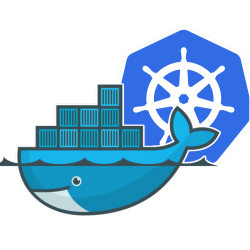Master container technologies like Docker, Podman, and CRI-O within the context of Kubernetes clusters. This course focuses on Kubernetes-specific implementations, omitting standalone features like networking, persistence, and resource/health management found in traditional Docker/Podman environments. Perfect for those using containers in Kubernetes.
Note: This masterclass is tailored for individuals leveraging container technologies specifically within Kubernetes. If you're seeking a comprehensive Docker/Podman course, we recommend our DOCKER-CORE offering. There, you'll dive into essential features for running Docker/Podman independently, including networking, persistence, resource/health management, Compose, and Podman pods.
Introduction
- Introduction to Containers
- Docker history
- overview of Podman
- OCI Container technologies (Docker, Moby,Podman, Buildah)
- What problems do containers solve
- Benefits of using containers
- Understand container isolation
- Containers vs virtual machines
- How containers facilitates devops
- Installing Docker CE or Podman
Containers
- Deeper dive into container isolation
- Introduce Images and the relation with containers
- Linux Namespaces (PID, UTS, NET, etc) and containers
- Understand ephemeral containers
- Discuss the various states of a container (Created, Up, Paused, …)
- Running and Stopping containers
- Run detached containers in the background
- Managing containers (listing, removing, inspecting, killing, pausing, restarting)
- Discuss go-templates for inspecting containers
- Interactive containers
- Executing commands in running containers
- Copying files and directories to and from containers
- How to Expose (and map) network ports
- Introduce use of linux namespaces (e.g, user namespaces in podman)
- Troubleshooting containers
- getting information (logs, exit codes, oom kill, …)
- debugging containers
- Using systemd
Container Images (OCI)
- Introduce Container repositories (Docker Hub, Quay.io)
- Appreciate that image are immutable
- Managing images (listing, removing, inspecting)
- Fully understand image layers (including intermediate)
- List different ways to create images
- Container images FROM scratch
- Creating base images (e.g., Debian)
- Building an image from Containers
- Using Multi-stage builds
Creating and Using Container Files
- Building images using different tools (docker, buildkit, buildah)
- Understand the syntax of a
Containerfile/Dockerfile - Choosing and specifying a base image
- Adding meta-data
- Understand the build process
- Understand the build context
- Introduce dockerignore files
- How to optimise reusing of layers
- Running commands effectively
- Understand shell-form and exec-form when running commands
- Keeping your builds deterministic
- Copying files and directories
- improve performance using COPY --link
- Difference between COPY and ADD
- Understand the working directory (and changing it)
- Defining network ports
- Changing the container's environment
- Building executable containers
- Understand how to use ENTRYPOINT and/or CMD
- Best practices in creating images
- Using traditional build containers
- Using multi-stage build files
- using mounts in dockerfiles (e.g., secrets, *ssh, …)
- speed-up builds using cache mounts
